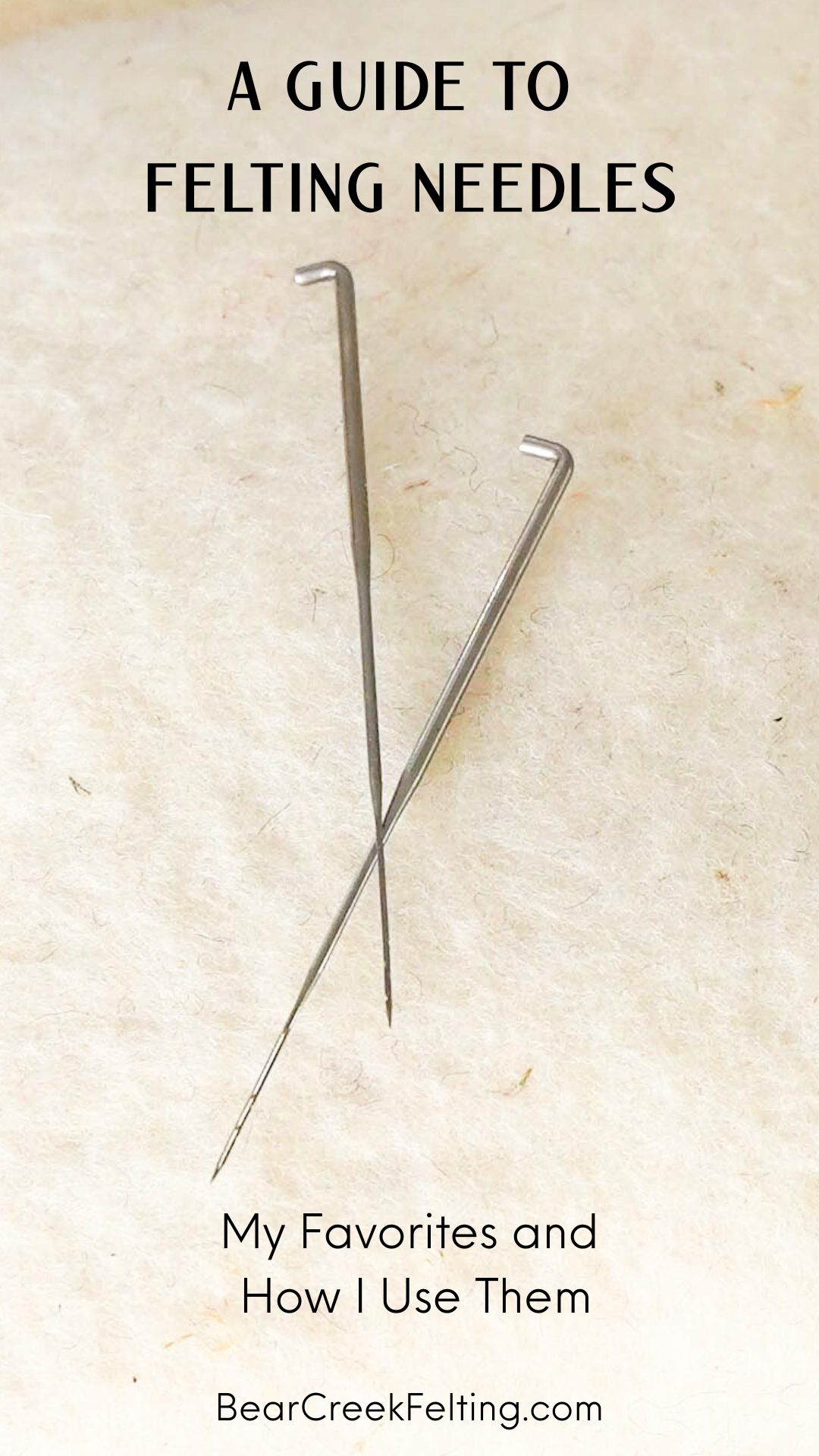
A Guide to Felting Needles: My Favorites and How I Use Them
Felting needles are the heart of needle felting. These specialized tools are what allow us to sculpt loose fibers into firm, detailed wool creations. Over the years, I’ve learned that the type of needle you use can make a huge difference in how smooth, fast, and enjoyable your felting process is.
For a long time, I used only one needle — but now I’ve added several new ones to my shop and into my own toolkit. Each has its own unique strengths, and I’m excited to share why I like them, how I use them, and which ones I recommend depending on your project.
Felting Needle Basics
Before we get into specific types, here are a few important things to know about felting needles:
- Construction: Felting needles are made of high-carbon or stainless steel. They have a shaft with notches (barbs) that grab fibers and tangle them together.
- Gauge: The gauge refers to thickness. Lower numbers (like 32–36) are thicker and best for shaping. Higher numbers (38–40) are finer and better for detail work.
- Shapes: Needles come in different cross-sections (triangle, star, twist, crown, etc.). Each shape changes how the barbs interact with the wool.
- Durability: Needles do wear out over time. When they feel dull, leave dents, or get harder to push in, it’s time to replace them.
- Safety: Felting needles are sharp! Always use a proper felting pad and handle with care.
My Needle Toolkit and How I Use Each One
Cross Star 36 – My Workhorse
This has always been my favorite needle and is still the one I use most often. With four working edges instead of three, it felts faster and more efficiently. I use it for the bulk of the shaping and general sculpting. If you’re just getting started, this is the needle I recommend beginning with.
Cross Star 38 – For Firmer Felting
When the 36 starts to feel harder to push in, I switch to the Cross Star 38. It’s a bit finer, so it continues compacting the wool without leaving large dents. I love it for firming up sculptures and refining shapes once the basic form is in place.
Triangle 36 – For Indentations
Unlike the star-shaped needles, the Triangle 36 is my go-to when I want to intentionally leave an indentation. It’s useful for creating textures or shaping areas that need definition, like eye sockets or muscle lines.
40 Gauge Crown – For Fine Details
This needle is perfect for finishing work. With just one barb per side, it’s gentle and doesn’t disturb the surface much. I use it for touch-ups, blending fuzzies, or working on delicate areas like faces where I don’t want to leave dents.
38 Gauge Twist – For Deep Felting
The twisted shaft helps fibers catch from multiple angles, making it easier to felt deep inside a sculpture. I don’t use this one as often, but it’s handy for larger, denser projects where you want the inside to be as firm as the outside.
Reverse Needle – For Blending Colors
The reverse needle doesn’t push fibers in — it actually pulls them out. I use it when I’ve layered a new color over another and want some of the underneath color to show through naturally. It’s perfect for blending colors, adding highlights, or giving a more realistic look to animal fur and wool.
Choosing the Right Needle
With so many options, which felting needle should you choose? Here are my recommendations:
-
Best for beginners: Cross Star 36
-
Best for firming and refining: Cross Star 38
-
Best for leaving texture/indentations: Triangle 36
-
Best for delicate details: 40 Gauge Crown
-
Best for deep interior felting: 38 Twist
-
Best for blending colors: Reverse Needle
Having more than one needle gives you flexibility and saves frustration. Switching needles at the right time makes felting faster, smoother, and easier on your hands. These recommendations are based on what works best with Bear Creek Wool.
What’s Your Favorite Needle?
I’ve shared my favorites and how I use them, but I’d love to hear from you! Do you have a felting needle you reach for more than any other? Or have you tried a specialty needle that changed the way you felt?
Share your favorite needle — and why you like it. Your experiences might help someone else discover their new go-to tool!
We hope this exploration of felting needles has provided you with valuable insights into these essential tools of the needle felting trade. From their construction and barbs to gauges and wear, understanding the intricacies of felting needles can significantly impact your felting experience. By selecting the right needle for the task at hand and recognizing when it’s time for a fresh one, you can maximize your felting efficiency and achieve outstanding results. Remember to handle your needles with care and explore the vast resources available to further hone your needle felting skills. Happy felting!









